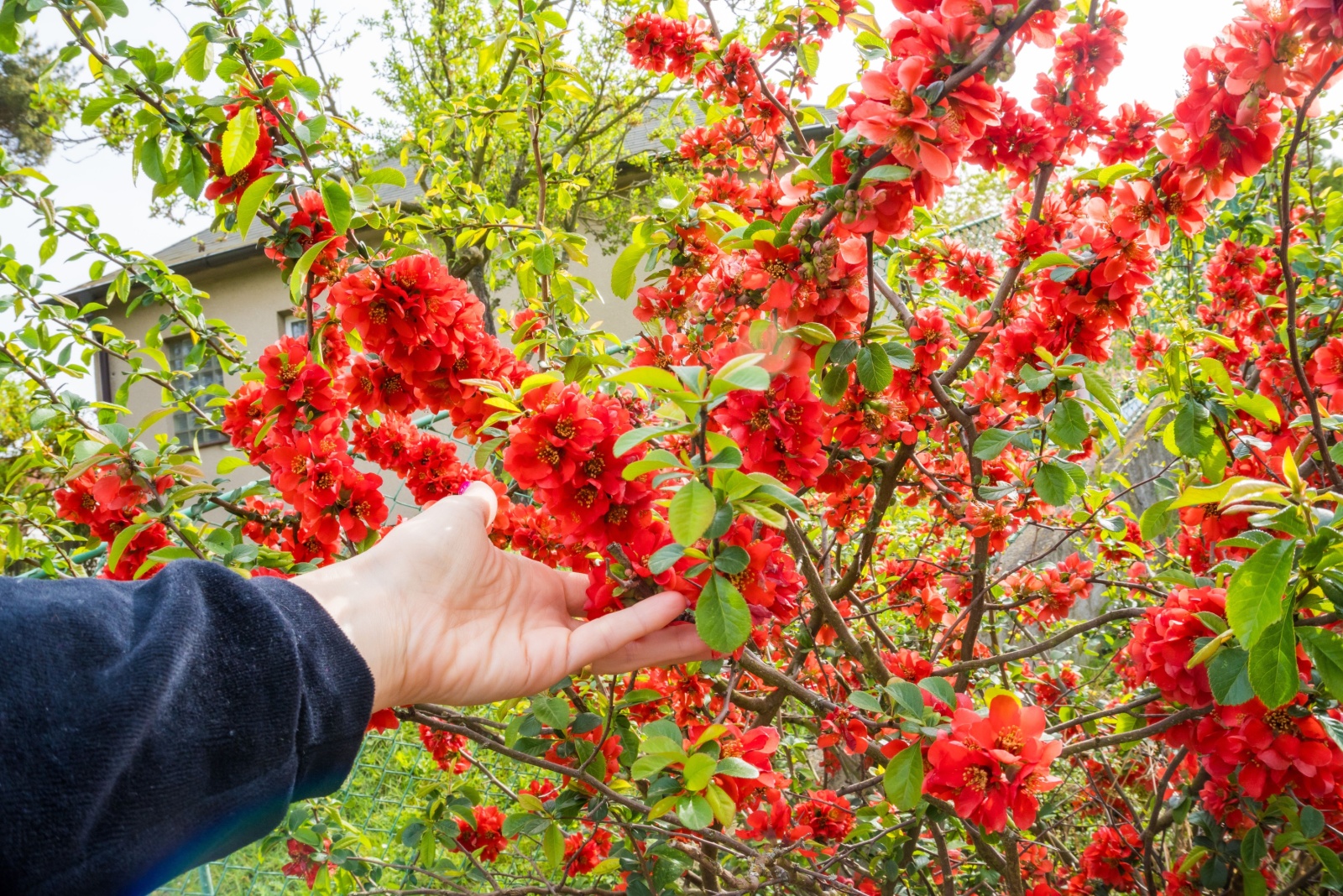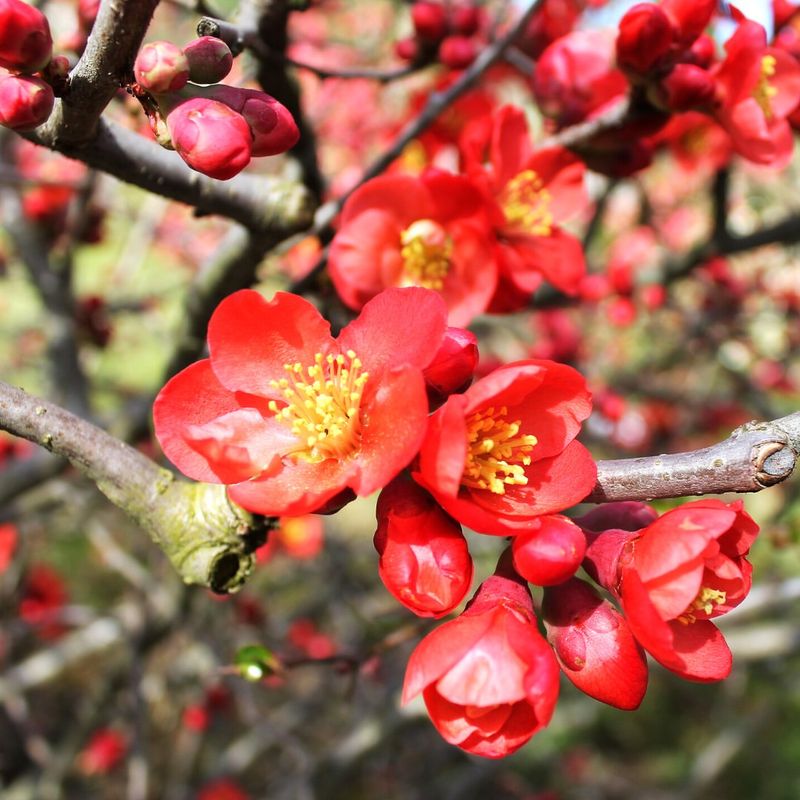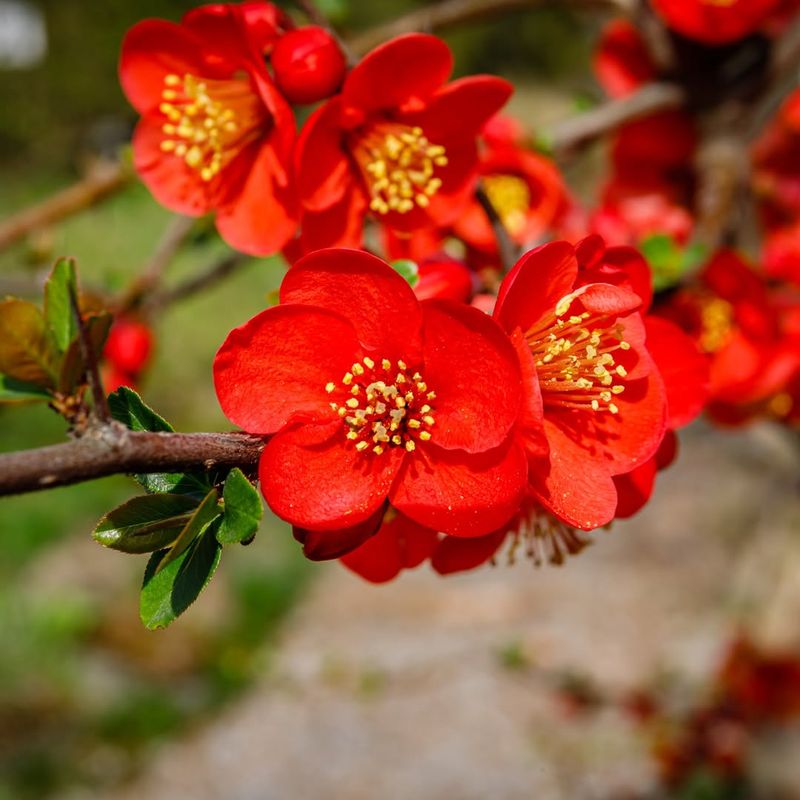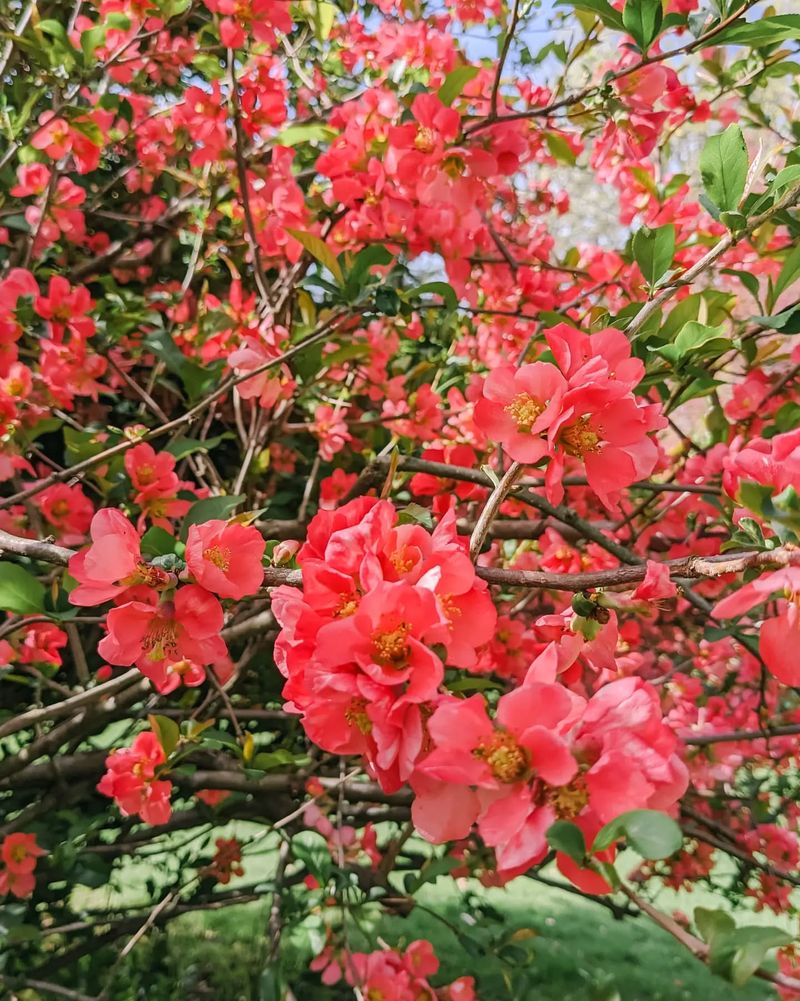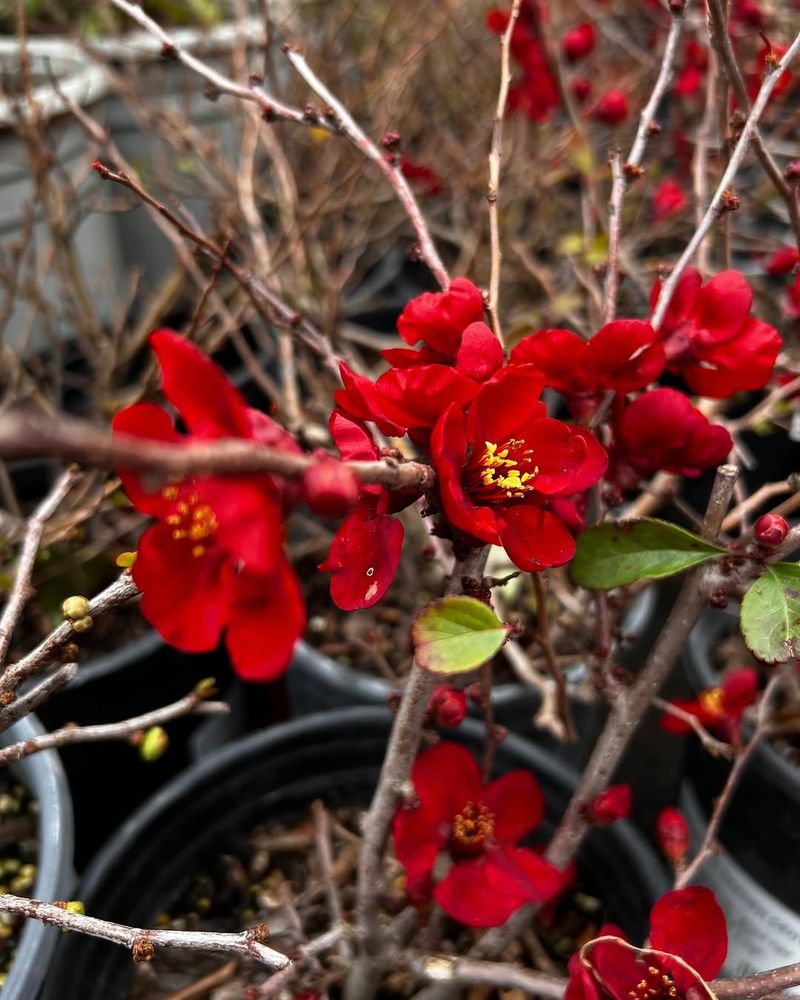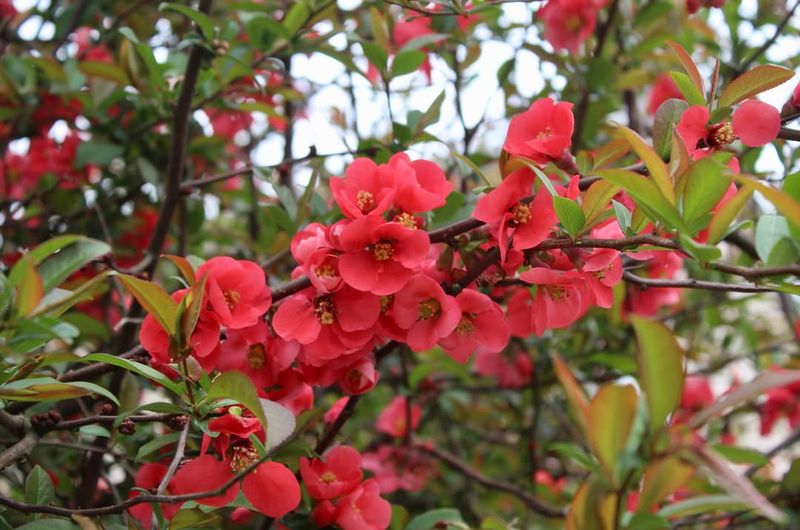Flowering quince is one of those shrubs that really knows how to put on a show when spring arrives in Massachusetts. With fiery red blooms that appear before most other plants wake up, this hardy shrub brings color to gardens when we need it most.
If you’re looking for a low-maintenance plant that can handle our unpredictable New England weather while delivering stunning flowers year after year, flowering quince deserves a spot in your yard.
1. Early Spring Color When You Need It Most
Most Massachusetts gardens look pretty dull in March and early April, but flowering quince changes that completely.
Blooms burst open on bare branches while snow might still be melting in shady corners, creating an unexpected splash of color. This early flowering habit means you get to enjoy something beautiful when most plants are still dormant.
The cheerful red flowers lift your spirits after a long winter and signal that warmer days are finally coming. Hummingbirds and early pollinators appreciate the nectar source too.
2. Handles Cold Winters Without Complaint
New England winters can be brutal, with temperatures dropping well below zero and ice storms appearing out of nowhere. Flowering quince thrives in these conditions because it’s incredibly cold-hardy, surviving temperatures down to negative 25 degrees Fahrenheit.
Unlike more delicate flowering shrubs that suffer winter damage, this tough plant bounces back every spring.
Massachusetts gardeners don’t need to wrap it in burlap or worry about frost protection. It simply takes whatever winter throws its way and keeps growing strong.
3. Requires Almost Zero Fussing Once Established
Busy gardeners love flowering quince because it doesn’t demand constant attention or special care routines. Once the roots establish themselves during the first season, this shrub basically takes care of itself without needing fertilizers or frequent watering.
It tolerates poor soil, drought conditions, and even some neglect while still producing those gorgeous red flowers each spring.
For Massachusetts homeowners who want beauty without the weekend maintenance chores, this plant fits perfectly. Just plant it, water occasionally the first year, and then enjoy the show.
4. Deer Usually Leave It Alone
Anyone gardening in Massachusetts knows the frustration of watching deer munch through carefully chosen plants overnight. Flowering quince offers a welcome solution because deer typically avoid it, thanks to its thorny branches and less appealing taste.
While deer will devour hostas, roses, and tulips without hesitation, they generally pass right by flowering quince.
This makes it an excellent choice for suburban and rural properties where deer browsing is a constant challenge. You can actually enjoy your flowers instead of feeding the local wildlife.
5. Works Perfectly As A Natural Barrier
Those thorny branches that deer dislike also make flowering quince an excellent natural fence or property line marker. The dense, tangled growth pattern creates a barrier that discourages both animals and people from pushing through.
Massachusetts gardeners often plant flowering quince along boundaries or use it to define different garden areas without installing expensive fencing.
The thorns provide security while the spring flowers add beauty, giving you both function and form. It’s like having a pretty security system that never needs batteries.
6. Produces Edible Fruit For Jams And Jellies
After those stunning red flowers fade, flowering quince develops small, fragrant fruits that ripen in fall. While too hard and tart to eat raw, these fruits make wonderful jellies, preserves, and additions to apple pies when cooked with sugar.
Many Massachusetts gardeners appreciate this bonus harvest, especially those who enjoy making homemade preserves.
The fruits have a unique flavor somewhere between apple and pear with floral notes. Not every ornamental shrub gives you both beautiful flowers and something useful for the kitchen.
7. Adapts To Different Soil Types And Conditions
Massachusetts soil varies dramatically from heavy clay in some areas to sandy loam in others, but flowering quince adapts to almost any soil type you have.
It tolerates acidic conditions common throughout New England and doesn’t mind occasional wet spots either. This flexibility means you don’t need to amend your soil extensively or worry about pH levels before planting.
Whether your yard has rocky soil, clay, or something in between, flowering quince will establish itself and bloom reliably. Few flowering shrubs are this forgiving about growing conditions.

